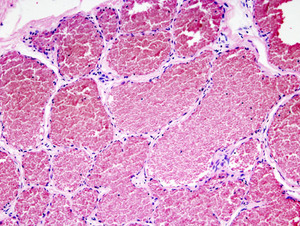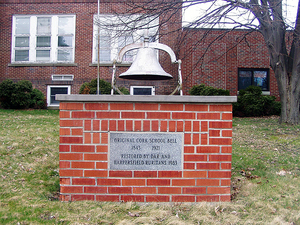The words “Giant Cavernous” are terrifying to hear from a doctor. But when they are part of a Giant Cavernous Liver Hemangioma (GCLH) diagnosis, the outlook is often not as grim as it sounds.
Dr. David C. Wolfe, M.D., of WebMD’s eMedicine clinical website, reported on December 8, 2009 that a hemangioma is the most common non-cancerous tumor in adults, usually under 4 cm in size. He and other clinical resources report that a Giant Cavernous Liver Hemangioma is at least 4.0 cm and up to 20 cm (roughly 1 + ½ inches to 8 inches). It is a collection of arteries and veins en-mass acting as if they are another organ in the body attached to and in the liver, with the blood circulating through it and then going on to another organ. GCLH and smaller liver hemangioma are also called Hepatic Hemangioma,and sometimes spelled Haemangioma.
No direct cause has been linked to GCLH, but because women are the more likely to present with this condition, there is some speculation certain hormones may be play a part. This condition can occur at any age, even in fetal stage. Women are 6 times more likely to have this condition than men, also according Dr. David C. Wolfe’s December 8, 2009 report on WebMD’s eMedicine clinical website. Women’s GCLH tend to also occur at younger ages and grow bigger than the same in men, according to emedicine.com. A Liver Hemangioma does not go away, but it can change shape and size. Once diagnosed, it is a chronic condition or may require surgical removal under some conditions.
Diagnostic Tests
Most often, GCLH diagnosis begins by being found as a happy accident. A happy accident in medical issues is when a test for a specific issue is being done, like lung x-ray or gallbladder ultrasound, and an unrelated medical condition is discovered.
Once diagnosed, ruling out the possibility of cancer or other complications is important. This step begins with referral to a liver specialty physician, who orders a baseline Magnetic Resonance Image (MRI) of the liver and the GCLH, as well as blood tests. The MRI becomes a periodic test to compare the baseline image to other MRI images over a range of time, from about six months durations to annual for up to five or more years, depending upon the size of the GCLH and how long it takes the blood to flow through it.
Symptoms may include abdominal pain or fullness, usually in the upper-right area, but depending upon the tumor’s location, it may present in the upper-left abdomen. Jaundice can occur if the mass blocks bile ducts. Fever, anemia and weight loss can also occur. Sometimes, liver hemangioma is misdiagnosed as other illnesses.
Patient Responsibilities
Because a GCLH in certain parts of the liver may be more vulnerable to internal bleeding, it is important for the patient to wear a medical alert bracelet or necklace with the engraving, Giant Cavernous Liver Hemangioma. With a medical alert symbol and engraving, medical personnel are alerted to the condition, should any medical emergency render the patient unable to speak or self-advocate.
Maintain communication with general physician and with a liver specialist, making sure each receive copies of any test results, include blood tests, MRI reports and anything else. Successful monitoring and any potential treatments needed depend upon this open disclosure. To do this, ask doctors to include the other doctor’s name on any tests ordered. Due to patient privacy disclosure laws in many places, without being stated on the test order, labs can only forward results to prescribing doctor.
Get a medical alert bracelet or necklace with the engraving of Giant Cavernous Liver Hemangioma. In case of injury or inability to speak or self-advocate, it is important for emergency personnel to know the patient has a mass of extra blood vessels in and on the liver.
The Bottom Line
Protocol for Giant Cavernous Liver Hemangioma (GCLH) or a smaller Liver Hemangioma is often a wait-and-see situation. Most patients have no complications, but regular monitoring is necessary for a period of a few months to a few years, depending upon individual circumstances.
Medical Alert bracelets and necklaces are available online, at some pharmacies with durable medical supply departments and by mail. Wearing one 24/7 and having it engraved with the words Giant Cavernous Liver Hemangioma is potentially life saving, and promises patient self-advocacy in an emergency situation.
Sources
http://fnic.nal.usda.gov
www.webmd.boots.com
http://epic.iarc.fr
www.hsph.harvard.edu
www.aolnews.com
www.medpagetoday.com
http://emedicine.medscape.com
Reference:
- What is gallbladder sludge? www.associatedcontent.com/article/2870098/what_is_gallbladder_sludge.html?cat=5
- Liver Screening for Hepatitis www.associatedcontent.com/article/2218625/hepatitis_risks_screening_free_liver.html?c
- Got Heart Disease and Heart Burn? www.associatedcontent.com/article/2575561/what_you_swallow_may_give_you_heartburn.htm



